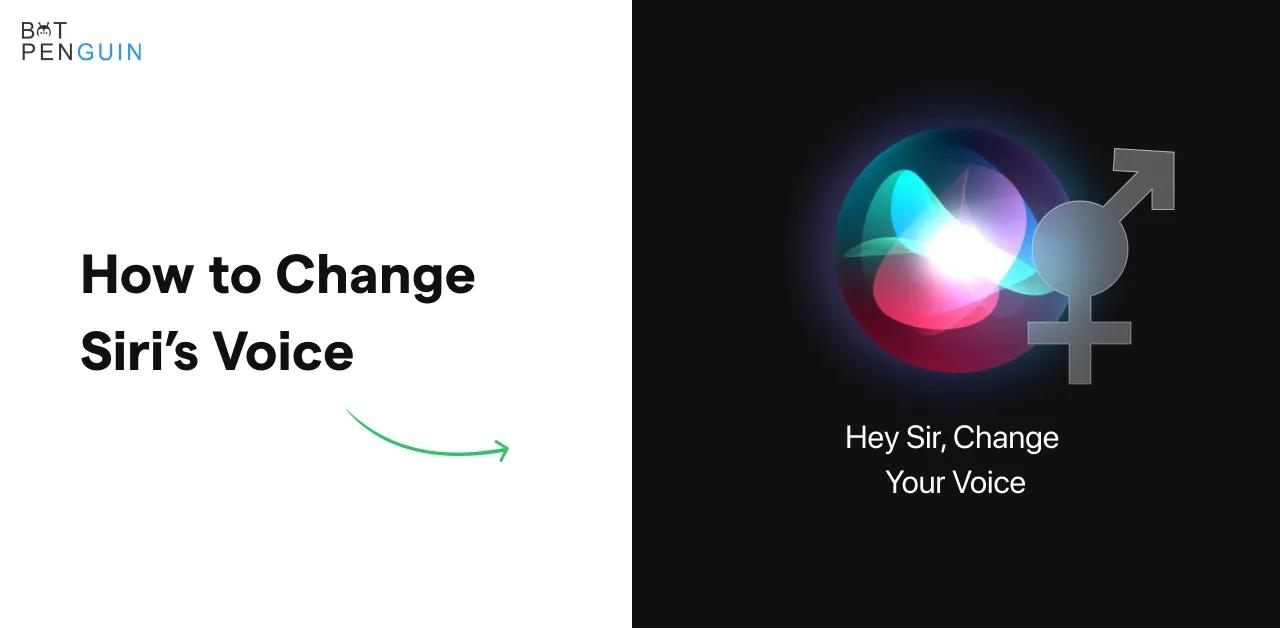Contact Centers versus Call Centers. It's like comparing apples and slightly more advanced apples.
On the surface, they might seem like the same thing, but peel back the layers and you'll find subtle differences that can significantly impact your business.
So grab a cup of coffee, put on your detective hat, and join us as we embark on a journey to uncover the distinctions between these two customer service powerhouses.
Let's dive in and solve the mystery of Contact Centers vs. Call Centers, and help you decide which is the perfect fit for your business needs.
What does Contact center mean?
Contact centers are centralized facilities or departments that handle customer interactions for a company. They are also sometimes referred to as call centers or customer service centers. The primary function of A contact center is to provide a channel for customers to interact with a company for various purposes, such as support, inquiries, complaints, feedback, and more.
Contact centers typically employ a team of agents trained to handle customer interactions through various channels such as phone, email, chat, social media, and even video calls. These agents may also use software tools to manage and track customer interactions, record customer data, and access knowledge bases to provide solutions to customer queries.
The success of a contact center is often measured by various metrics such as customer satisfaction, response time, first-call resolution rate, and average handling time. Contact centers are essential for Businesses that prioritize providing a positive customer experience, as they serve as the primary point of contact for customers seeking assistance and support.
What does Call center mean?
A call center is a facility or department within a company that is primarily focused on handling incoming and outgoing phone calls. The primary purpose of a call center is to provide a centralized location for Customers to receive assistance, support, or information from the company.
Call centers typically employ agents trained to handle many customer inquiries and issues over the phone. These agents use various technologies and tools to manage customer interactions, such as customer Relationship management (CRM) software, automatic call distributors (ACDs), and interactive voice response (IVR) systems.
Call centers can be inbound, outbound, or a combination of both. Inbound call centers handle incoming calls from customers, while outbound call centers make outgoing calls to customers for various purposes, Such as sales, marketing, surveys, and collections.
The success of a call center is often measured by key performance indicators (KPIs) such as call abandonment rate, the average speed of answer, average handle time, and first call resolution rate. Call centers Are critical for businesses that rely heavily on phone-based customer support or sales. They allow companies to efficiently manage essential phone calls while providing high-quality customer service.
Why Do You Need Contact Centers and Call Centers?
- Improved Customer Service: Contact centers and call centers are dedicated to providing excellent customer service, which can help improve customer satisfaction, increase loyalty, and drive sales.
- Increased Efficiency: Contact and call centers can handle many inquiries and support requests, allowing businesses to resolve issues quickly and efficiently.
- Cost Savings: Outsourcing customer service to contact and call centers can be more cost-effective than building an in-house customer service team.
- Scalability: Contact and call centers can be scaled up or down depending on the needs of the business, making them a flexible solution for companies of all sizes.
- Data Insights: Contact centers and call centers collect valuable data on customer behavior, preferences, and pain points. This data can be used to inform marketing strategies, product development, and overall business decisions.
What distinguishes contact centers from call centers?
While "contact center" and "call center" are often used interchangeably, the two have some key differences. A detailed explanation of these differences is Written below
1. Purpose
A call center primarily handles incoming and outgoing phone calls. In contrast, a contact center manages customer interactions across multiple channels such as phone, email, chat, social media, etc. The Purpose of both types of centers is to provide customer support, assistance, and information to customers, but contact centers provide a more comprehensive approach.
2. Channels
Call centers are typically focused on handling phone calls. They may use other communication channels, such as email and chat, to a lesser extent. Contact centers, on the other hand, are equipped to handle Multiple communication channels and provide a seamless experience across all channels.
Customers can reach out to contact centers through phone, email, chat, social media, or even video calls, making it easier to choose the channel that suits them best.
3. Scope of Support
Call centers often focus on providing technical support, answering queries, and resolving complaints. In contrast, contact centers provide a more comprehensive range of support services, including technical Support, sales, marketing, and customer service. Contact centers also handle complex queries and escalations, providing customers with a more personalized and comprehensive level of support.
4. Technology
Call and contact centers use technology to manage customer interactions. Call centers typically use tools like automatic call distributors (ACDs), interactive voice response (IVR) systems, and customer Relationship management (CRM) software to manage incoming and outgoing calls. Contact centers, on the other hand, are equipped with more advanced technologies such as multichannel routing, customer Analytics, and real-time reporting. Contact centers use these tools to provide a seamless experience across all communication channels and to gain a deeper understanding of customer behavior and Preferences.
5. Staffing
Call and contact centers employ agents to handle customer interactions. However, the skills required for agents in contact centers are more diverse than those in call centers. Contact center agents must be Trained to handle customer interactions across multiple channels.
They should be able to adapt to new communication technologies as they emerge. In contrast, call center agents often focus solely on phone-based support and may require a different level of training.
6. Workflow automation
Automation is utilized in contact centers for ticket routing, classification, property updates, and, most crucially, customer follow-up and closure.
Additional elements in contact center solutions are specifically intended to increase agent productivity. By eliminating repetitive activities, features like prepared responses, canned forms, and ticketing templates Provide employees more time to interact with clients. This lessens the possibility of burnout and keeps agents active.
Yet, call center software provides automation that increases efficiency, such as power dialers that automate outbound dialing and choices to customize voicemail greetings, redirect calls made outside of business Hours to voicemail, and drop voicemails.
7. Performance Metrics
The performance metrics used to evaluate call and contact centers differ. Call centers are typically measured by average handle time, first-call resolution, and call abandonment rates. These metrics focus on the Center's efficiency and the speed with which customer queries are resolved.
Contact centers, on the other hand, are measured by a broader range of metrics such as customer satisfaction, Net Promoter Score (NPS), customer effort score, and more. These metrics are focused on the Quality of the service provided, the level of customer engagement, and the overall customer experience.
8. Usage
Customer care and customer relationship management in a contact center
Technical assistance, telemarketing, and sales call centers
Customer relationship management and omnichannel customer support are provided through contact centers. Contact centers are preferred by digital natives who seek to offer integrated experiences across Platforms. Thus, contact centers are used in healthcare, education, travel, and hospitality sectors that demand multichannel communication.
Call centers are frequently utilized to place incoming and outbound calls because they primarily focus on phone-based client communication. For example, in addition to technical help, they are utilized to Manage telemarketing and sales. Industries where consumers prefer a conventional route, like the phone, are ideal candidates for call centers. These sectors include manufacturing, non-profit, banking, and Financial services.
9. Proactive vs. Reactive
Since customers tend to stick with firms that regularly provide positive experiences, proactive customer service is highly relevant in today's climate. With just one negative experience, the cost of poor customer Service can be as high as losing one out of every three clients.
Contact centers have an advantage in providing proactive help because they operate in the digital sphere. Cloud-based solutions' accessibility and wealth of data depict a customer's journey entirely.
Agents can then proactively contact the consumer to provide support by tracking signs of frustration like anger or dead clicks on your website or the product.
A few brands that have embraced a proactive customer care strategy are Amazon, Netflix, and Slack.
Call centers may not be as good at anticipating problems as contact centers because they exclusively use the phone as a communication route. Data typically need more insight to inform a proactive support Plan, even when collected, because it only captures a small portion of this bigger picture.
Conclusion
While call and contact centers share some similarities, the two have significant differences. Contact centers provide a more comprehensive approach to customer support, handling interactions across multiple Channels and providing a seamless experience for customers. They also use more advanced technologies and require a more diverse skill set from their agents.
On the other hand, call centers focus on phone-based support and efficiency metrics. Companies need to choose the type of center that best suits their business needs and customer expectations.
With the rise of digital communication channels, it's becoming increasingly important for businesses to have a comprehensive contact center strategy.
This is where BotPenguin comes in - a cutting-edge chatbot creation platform that can help businesses automate customer queries across multiple channels. By utilizing chatbots, businesses can provide faster, More efficient service and free up human agents to focus on more complex issues.



